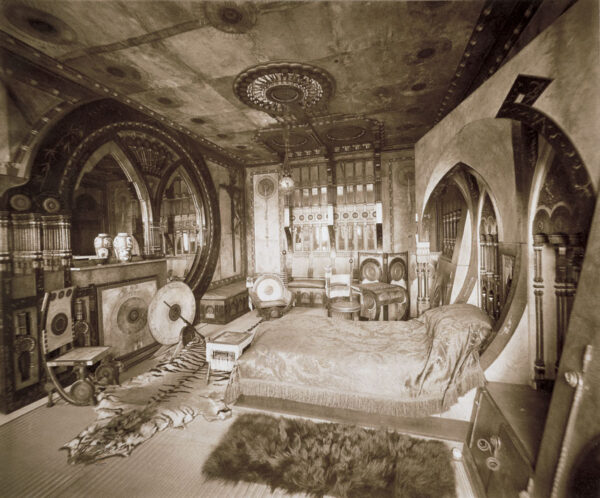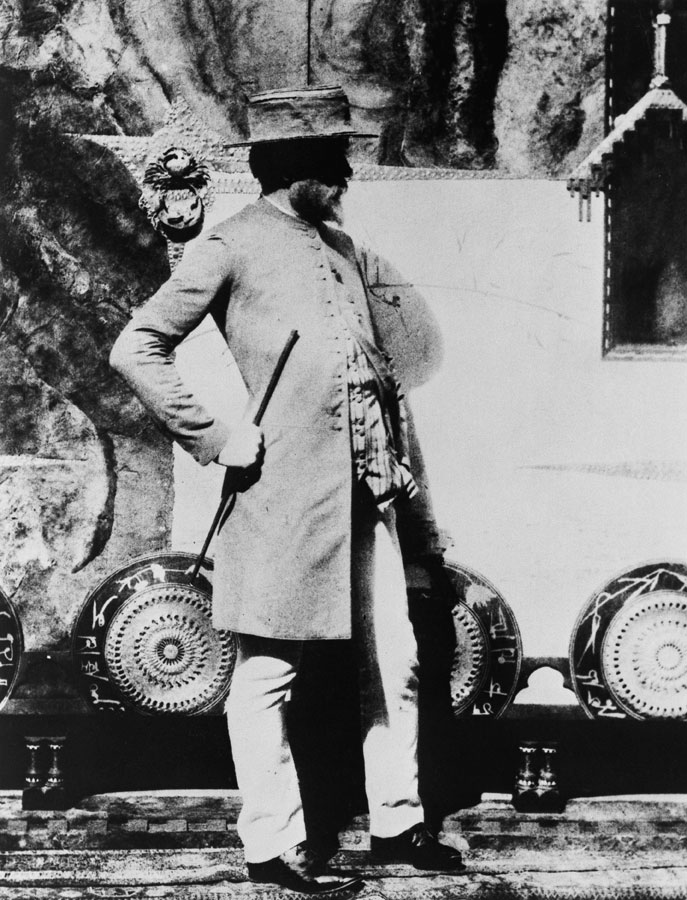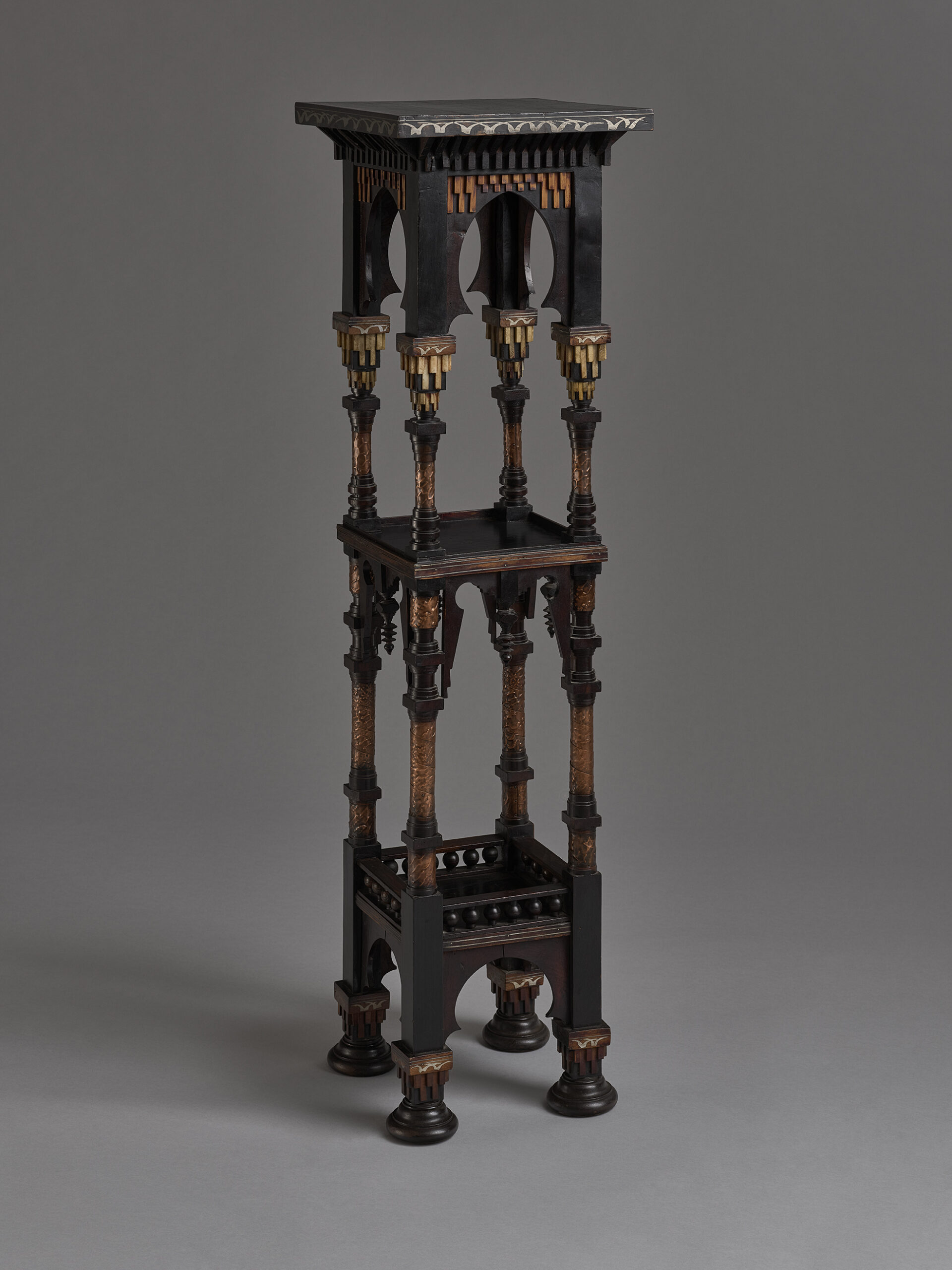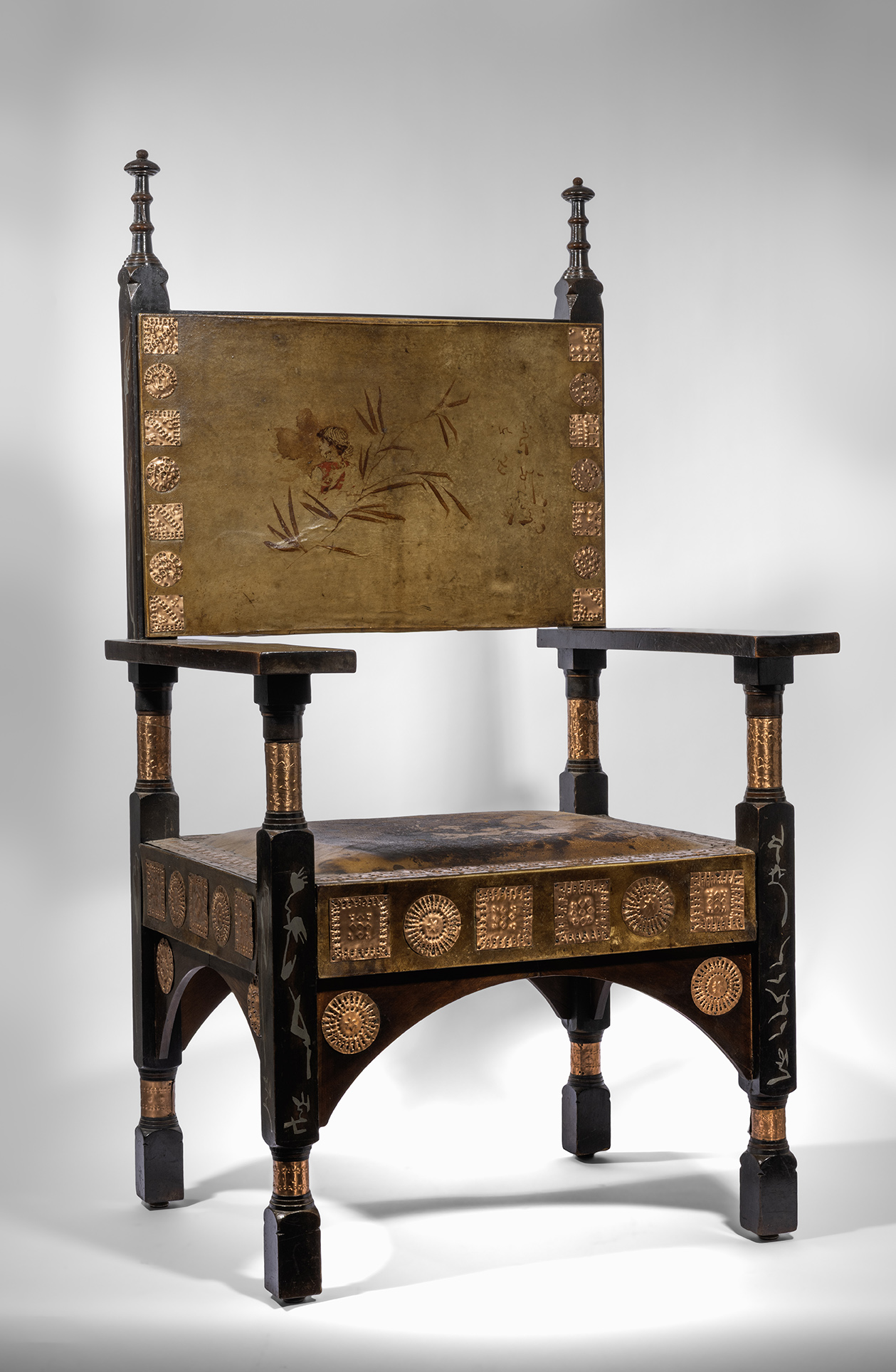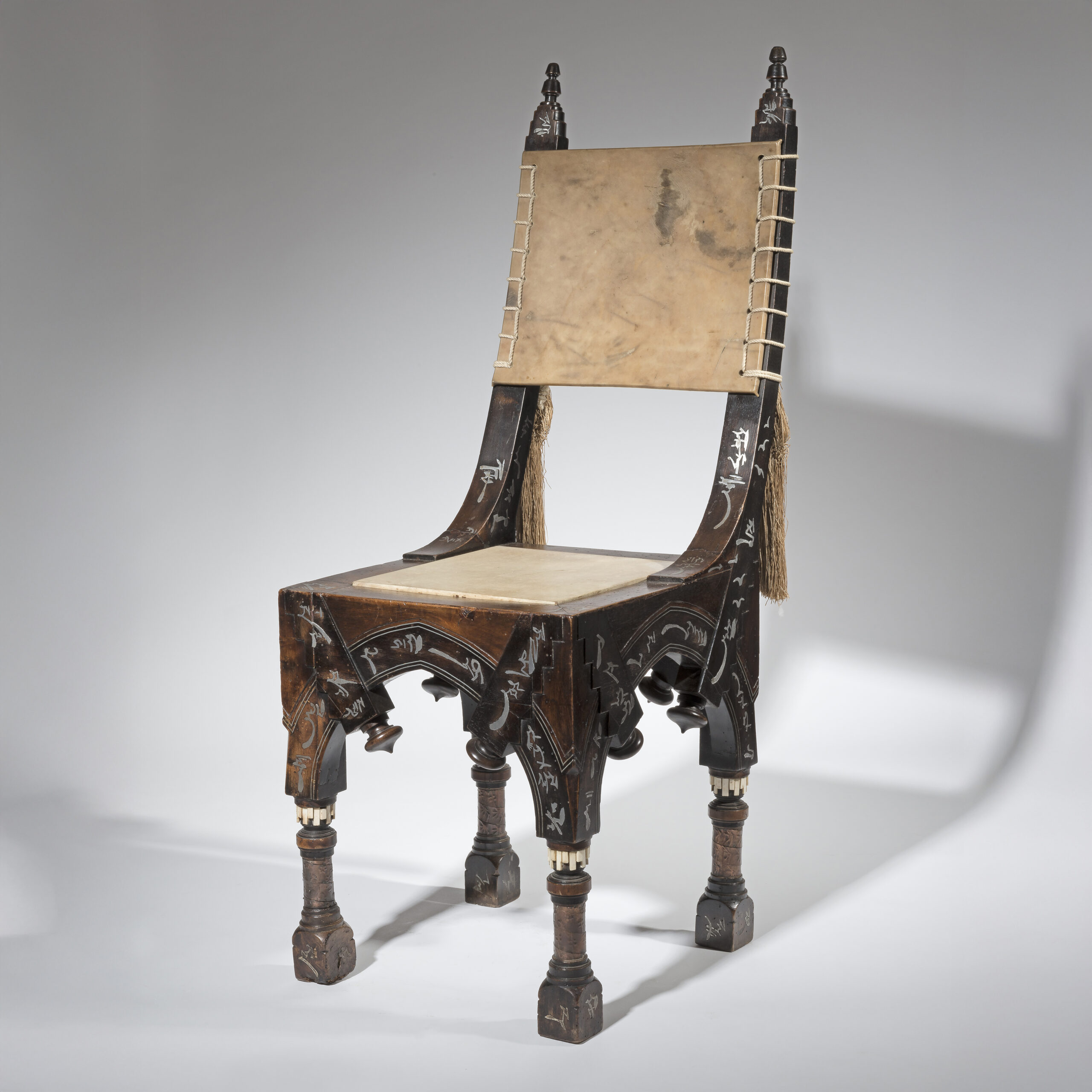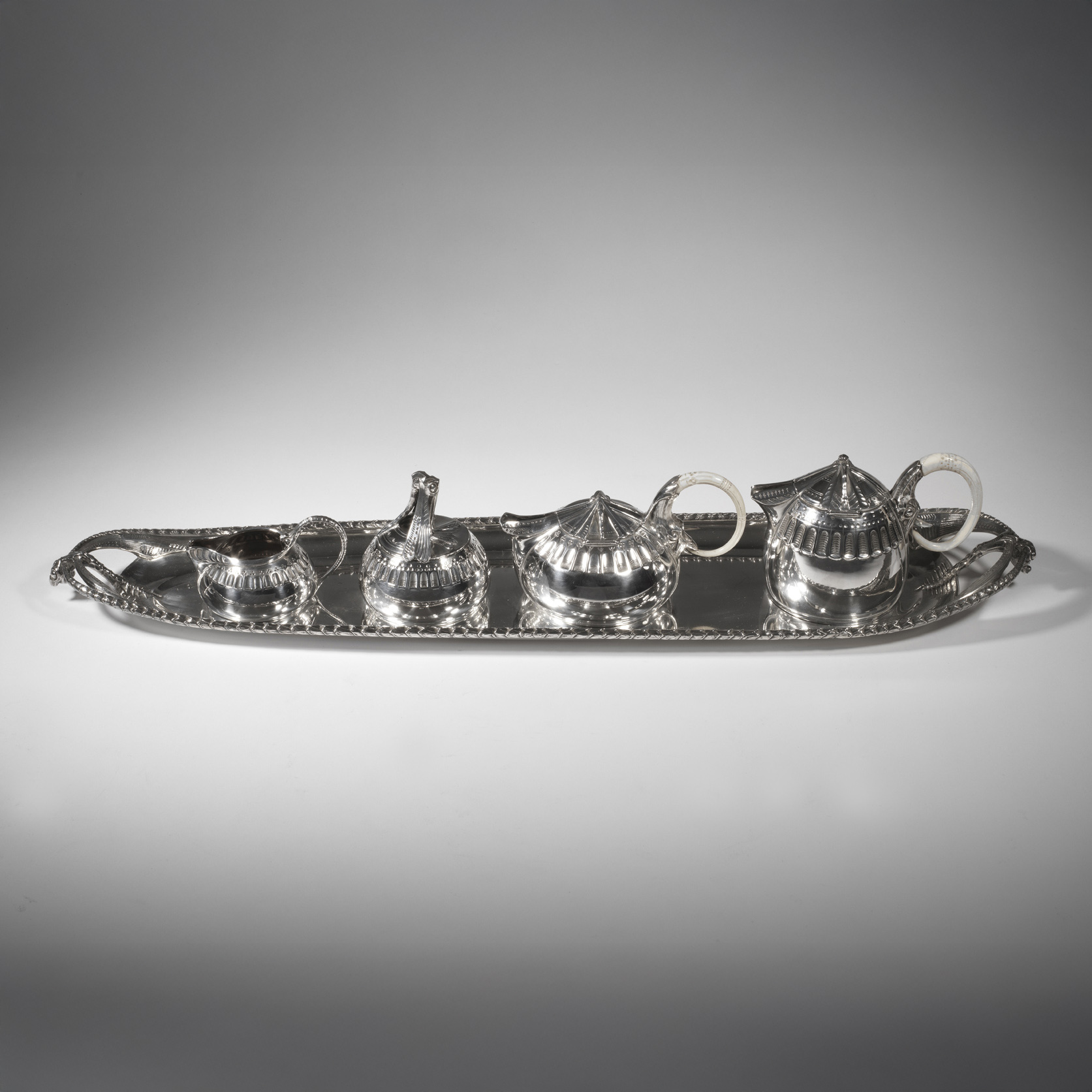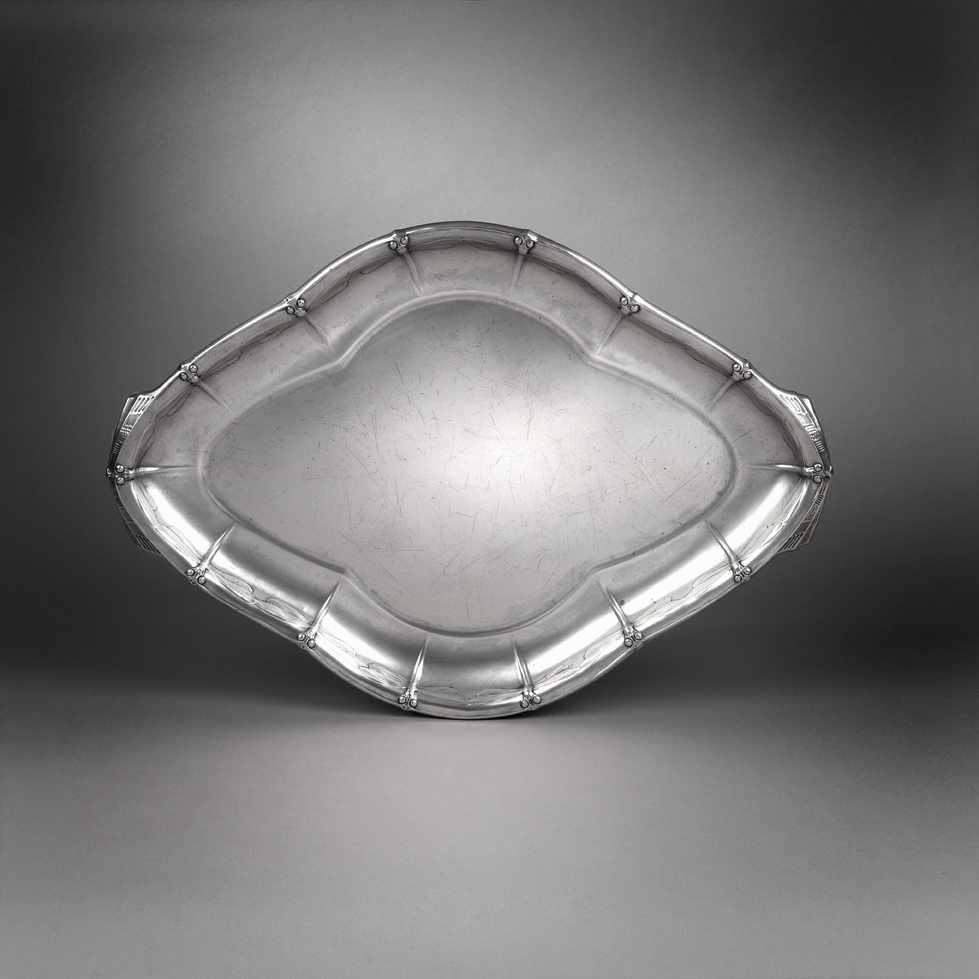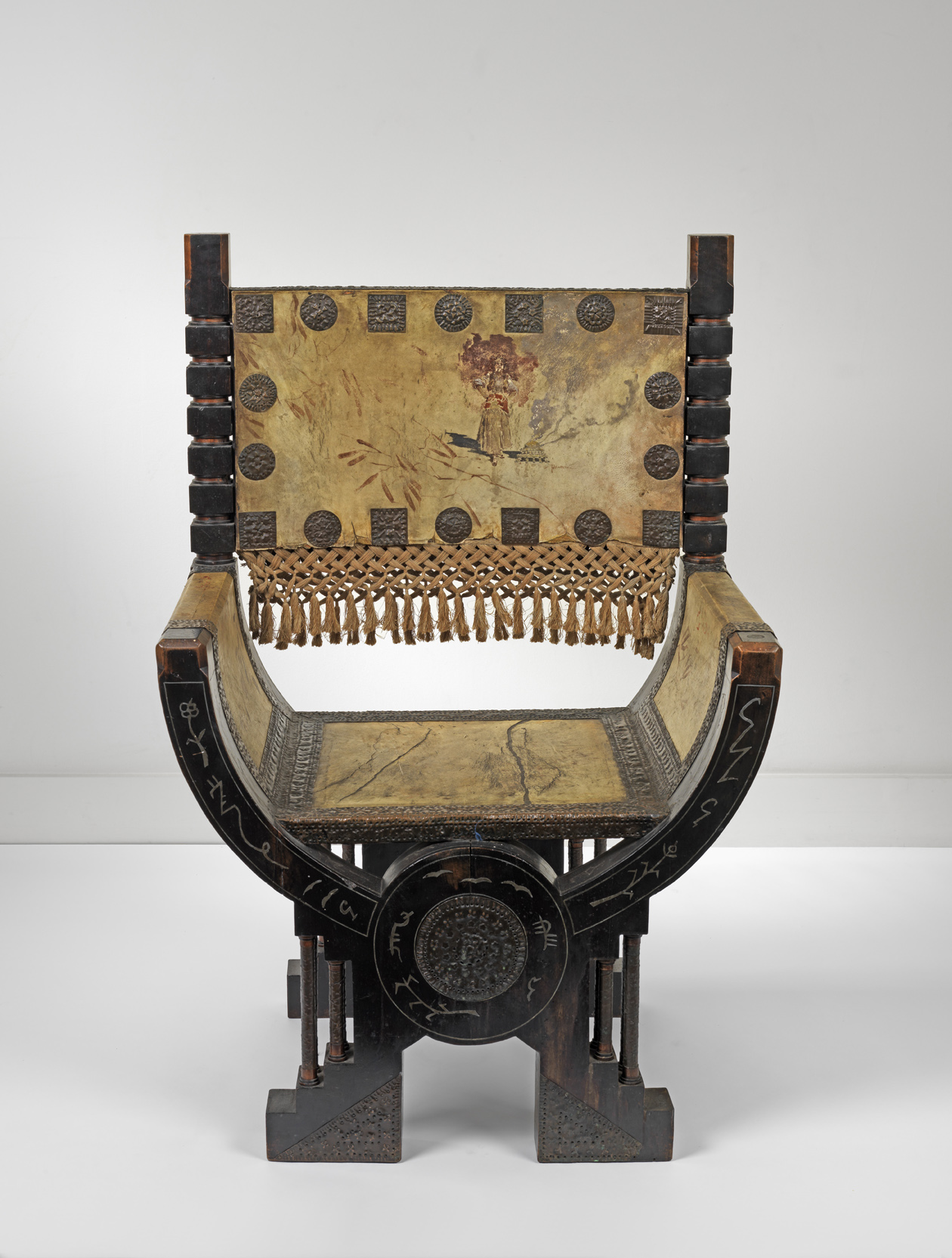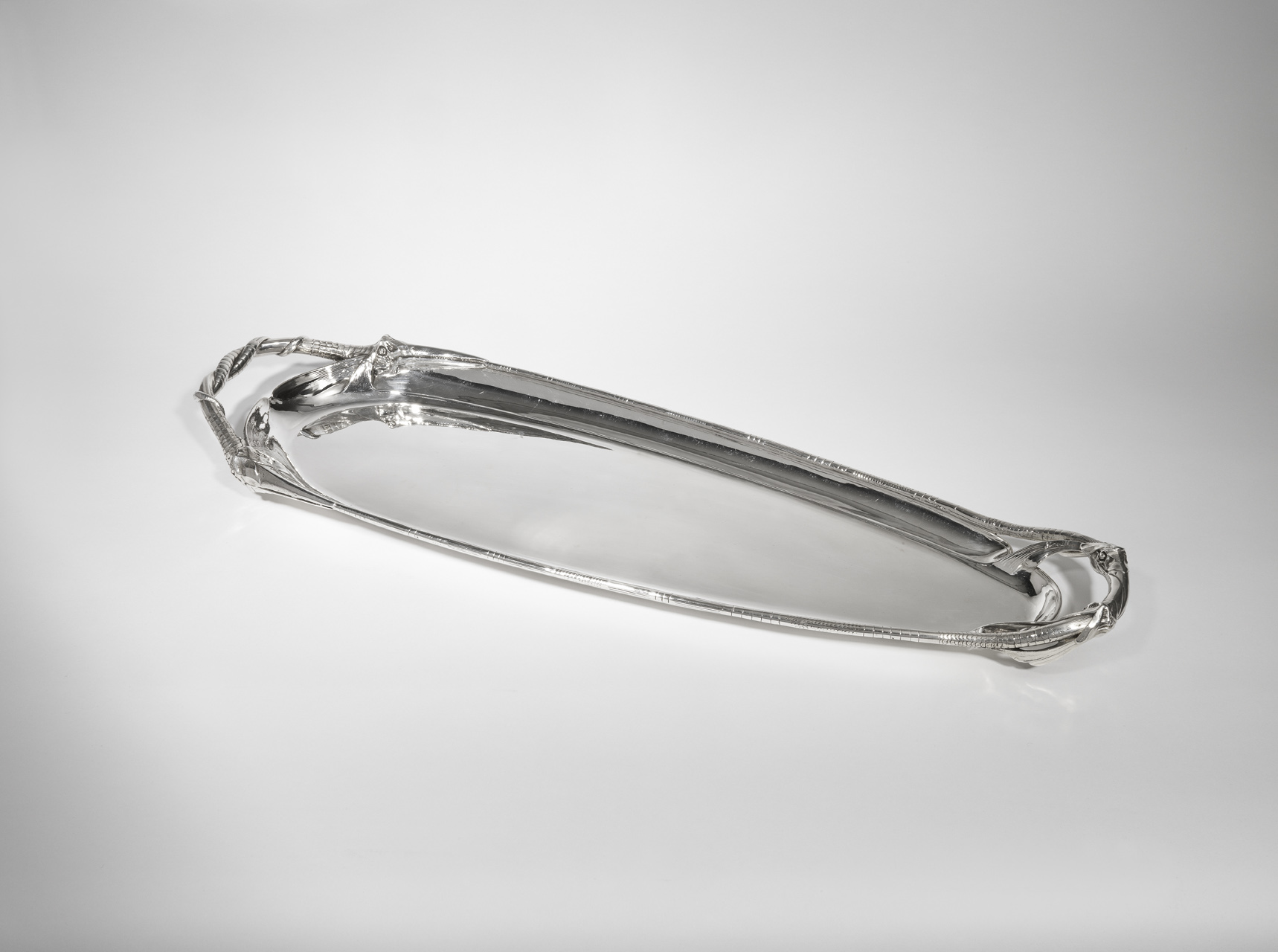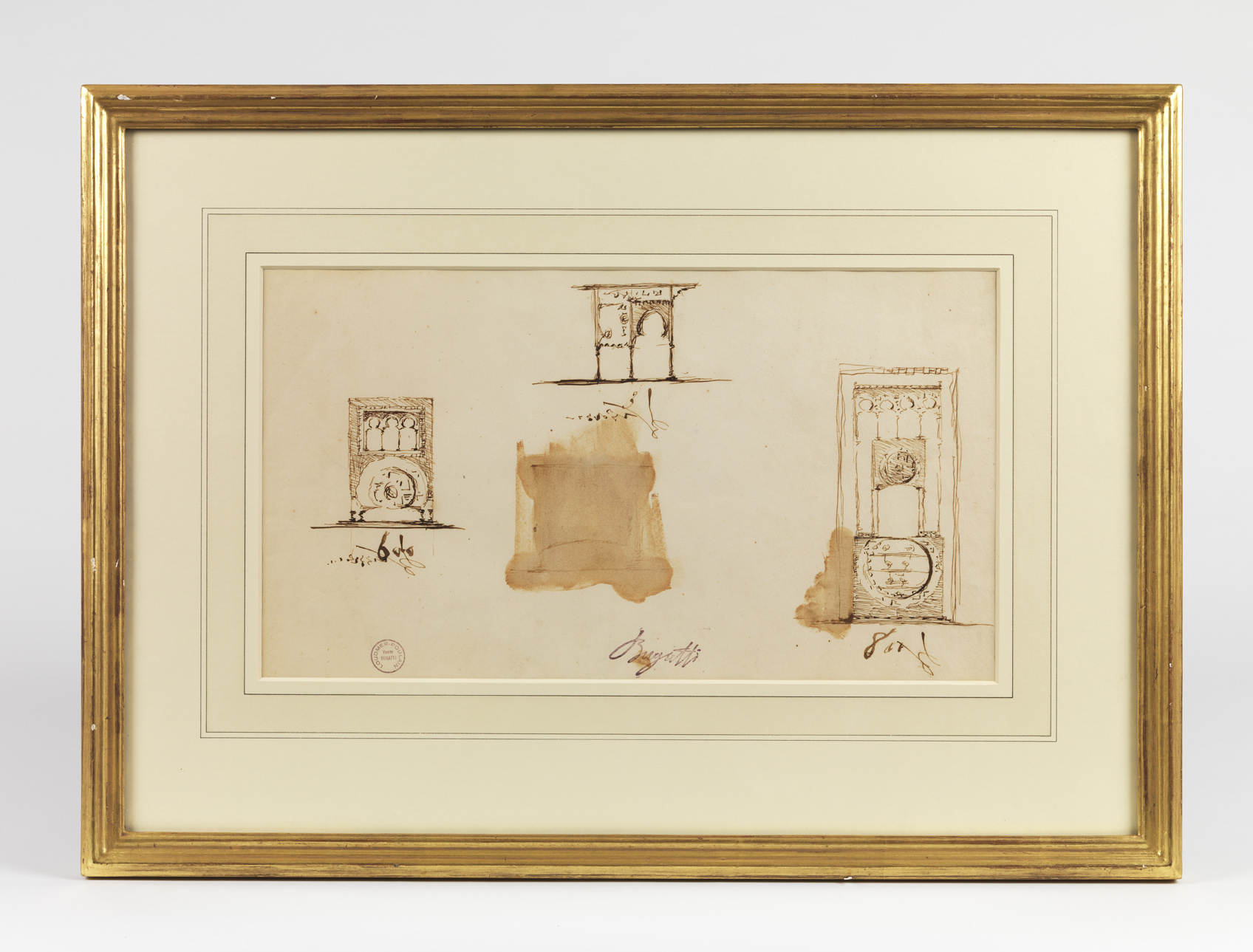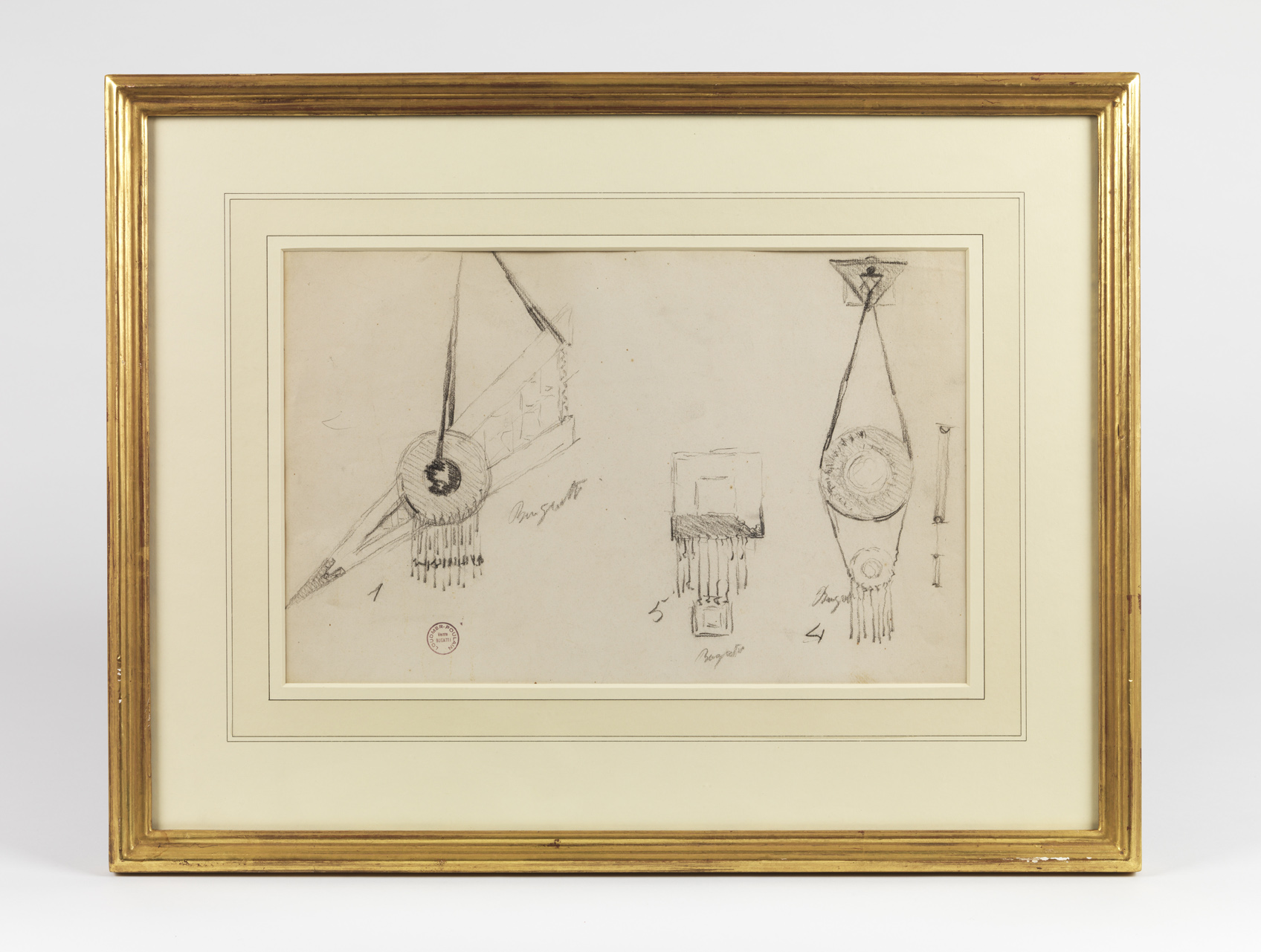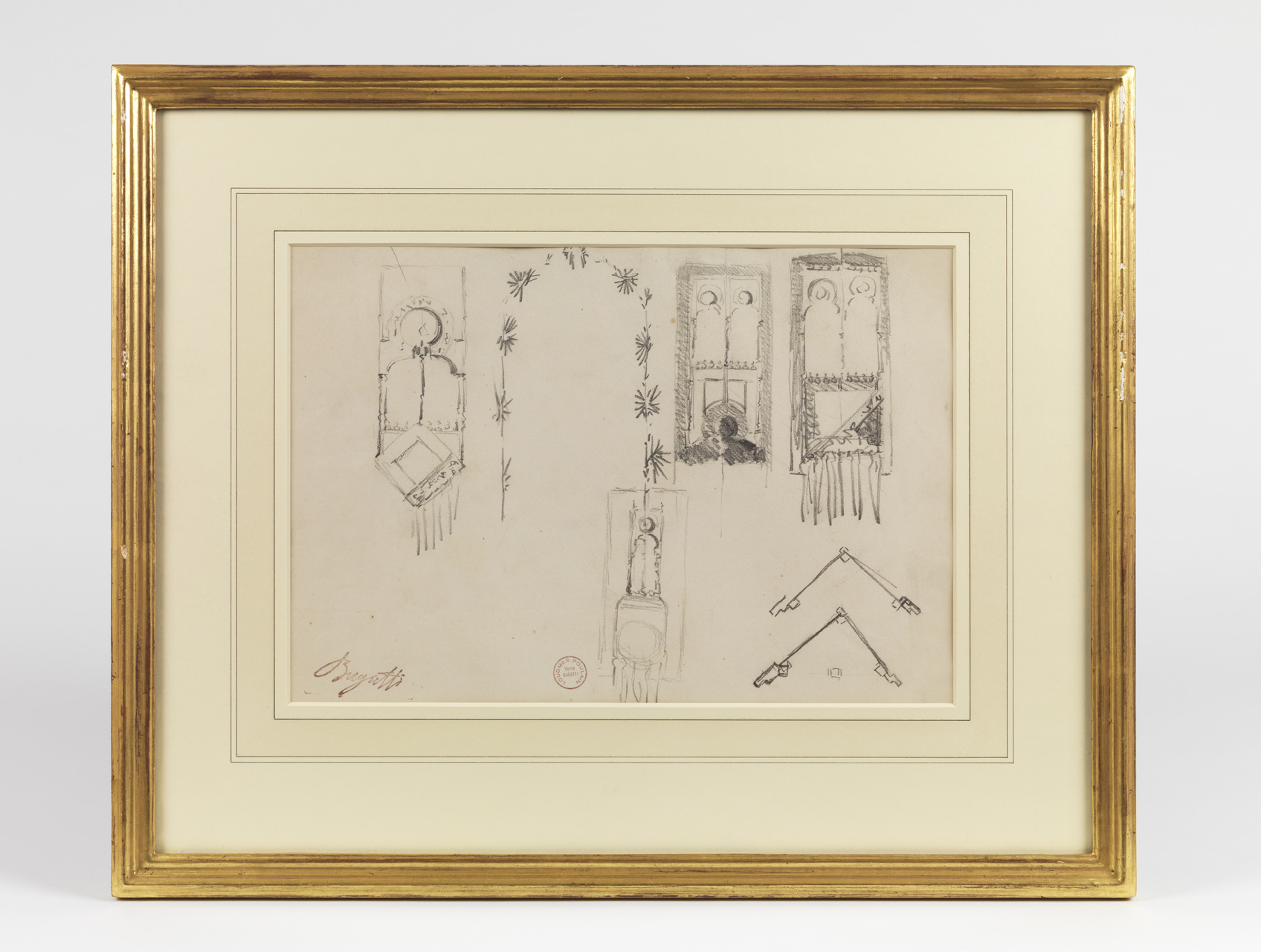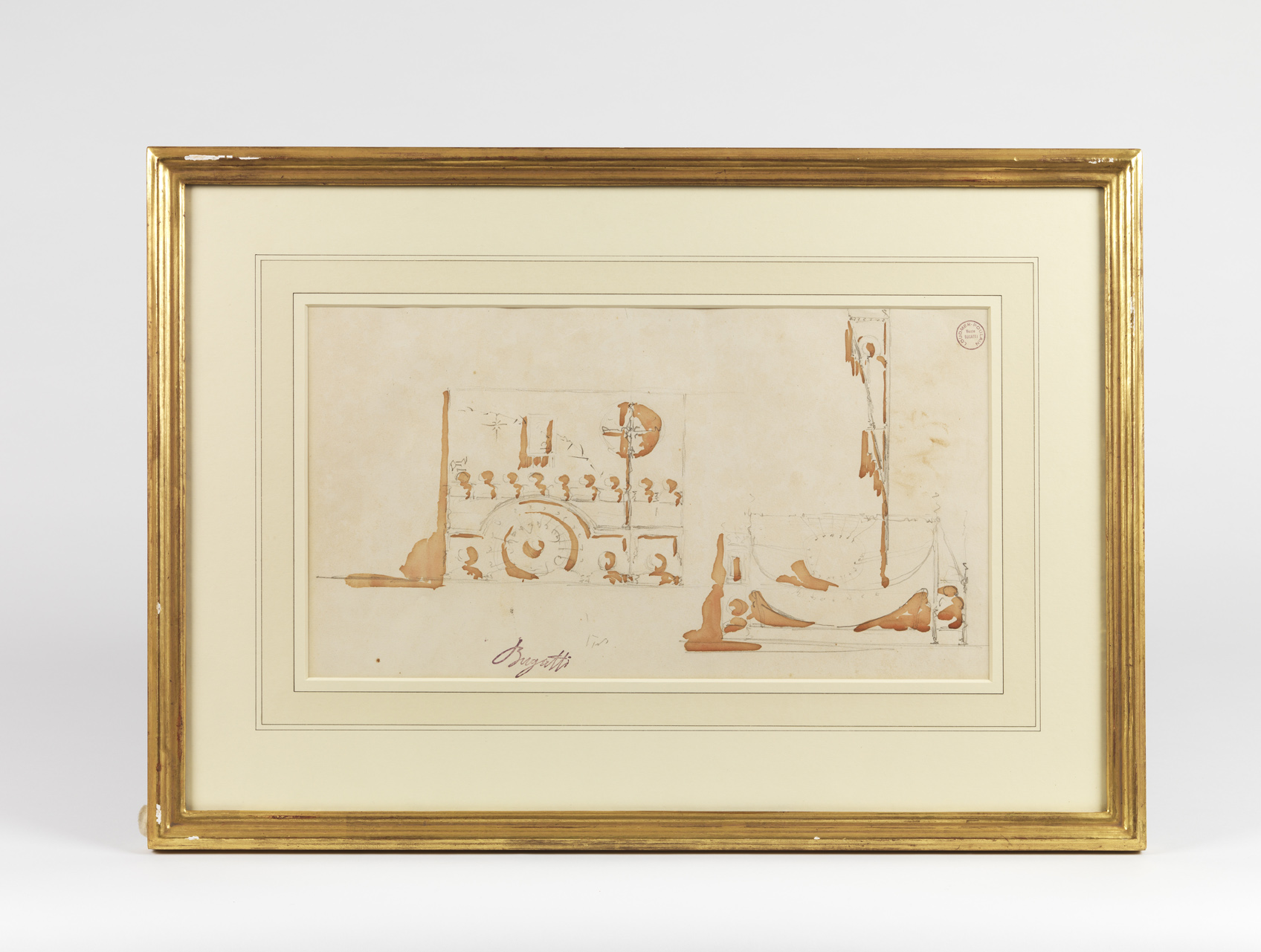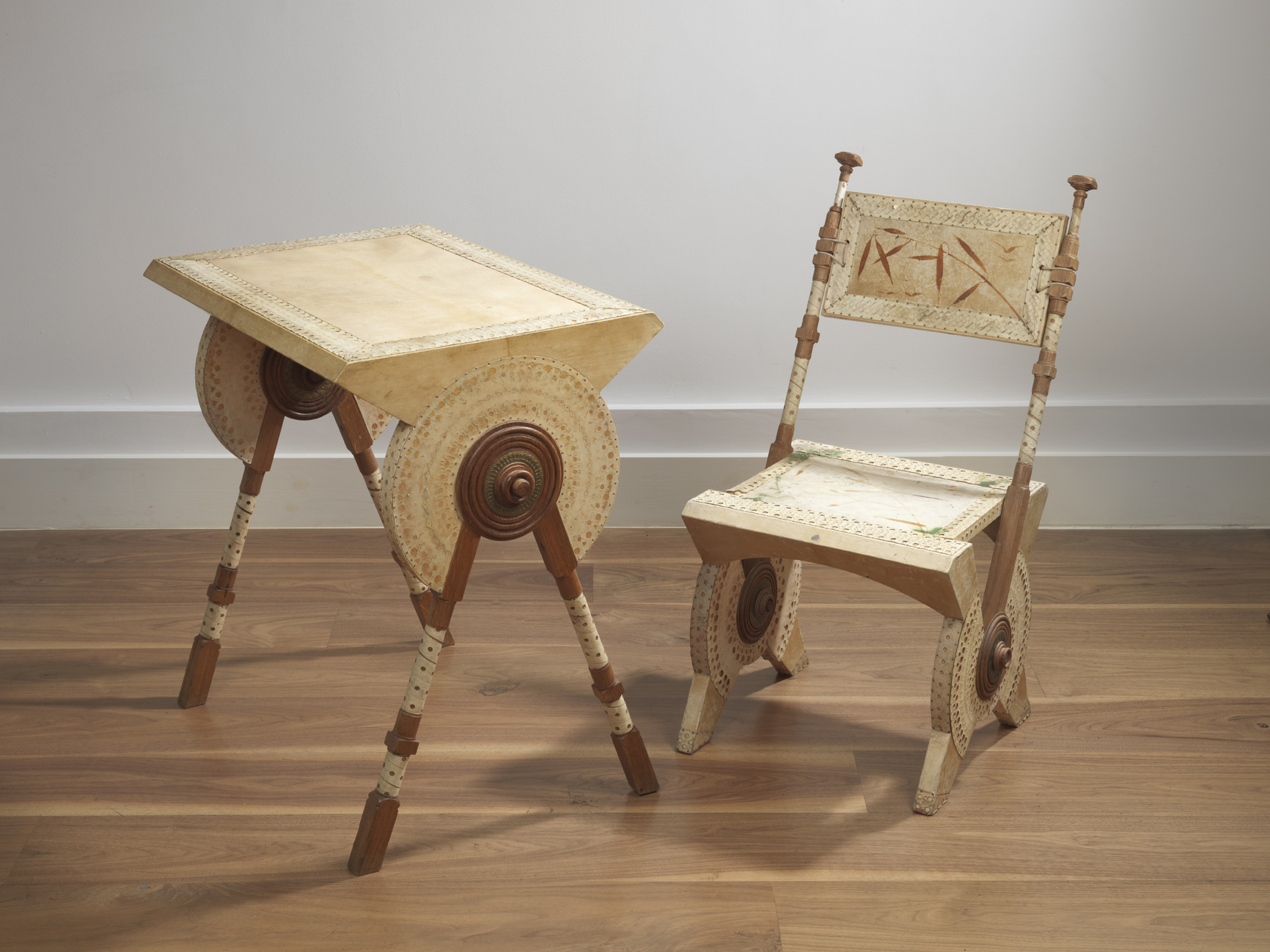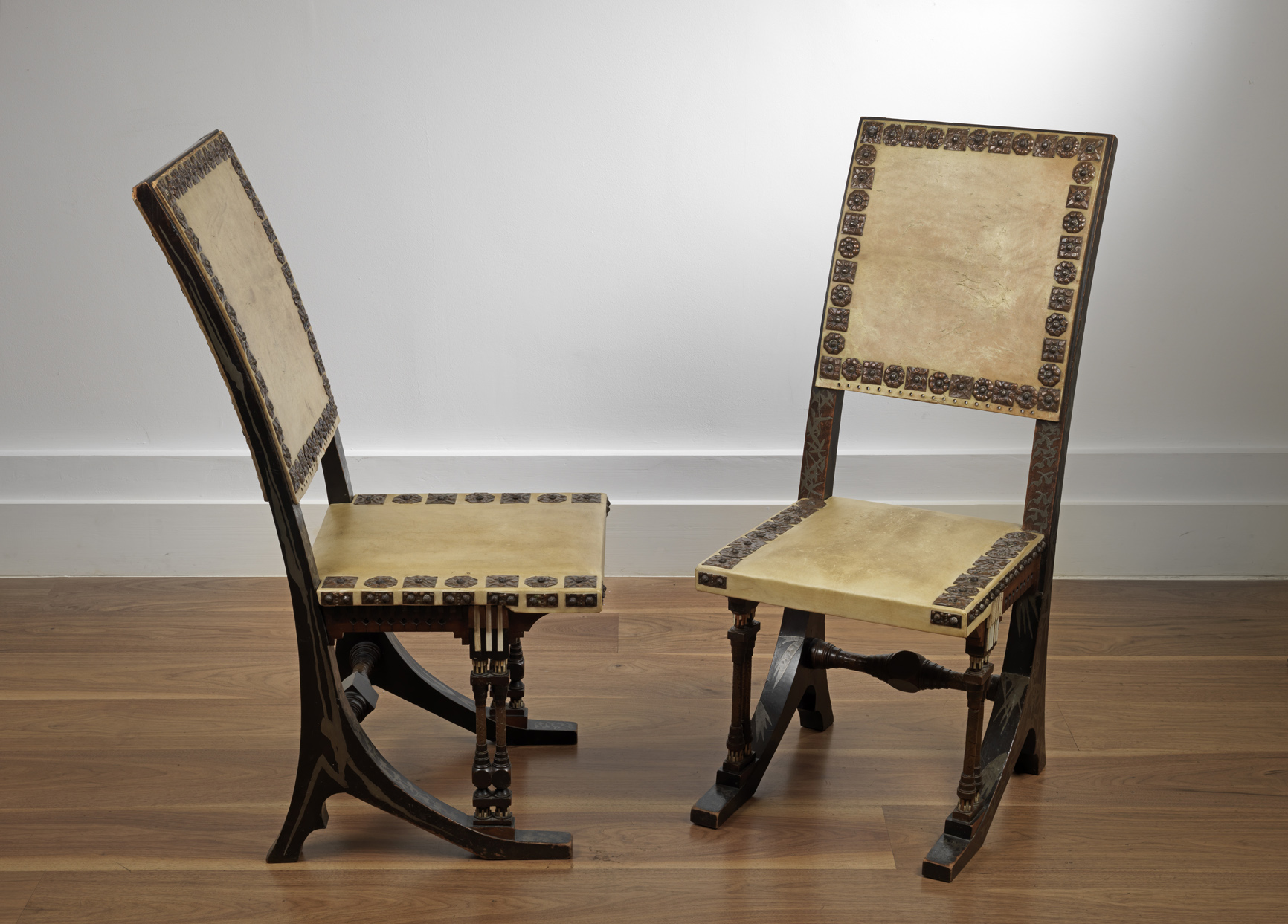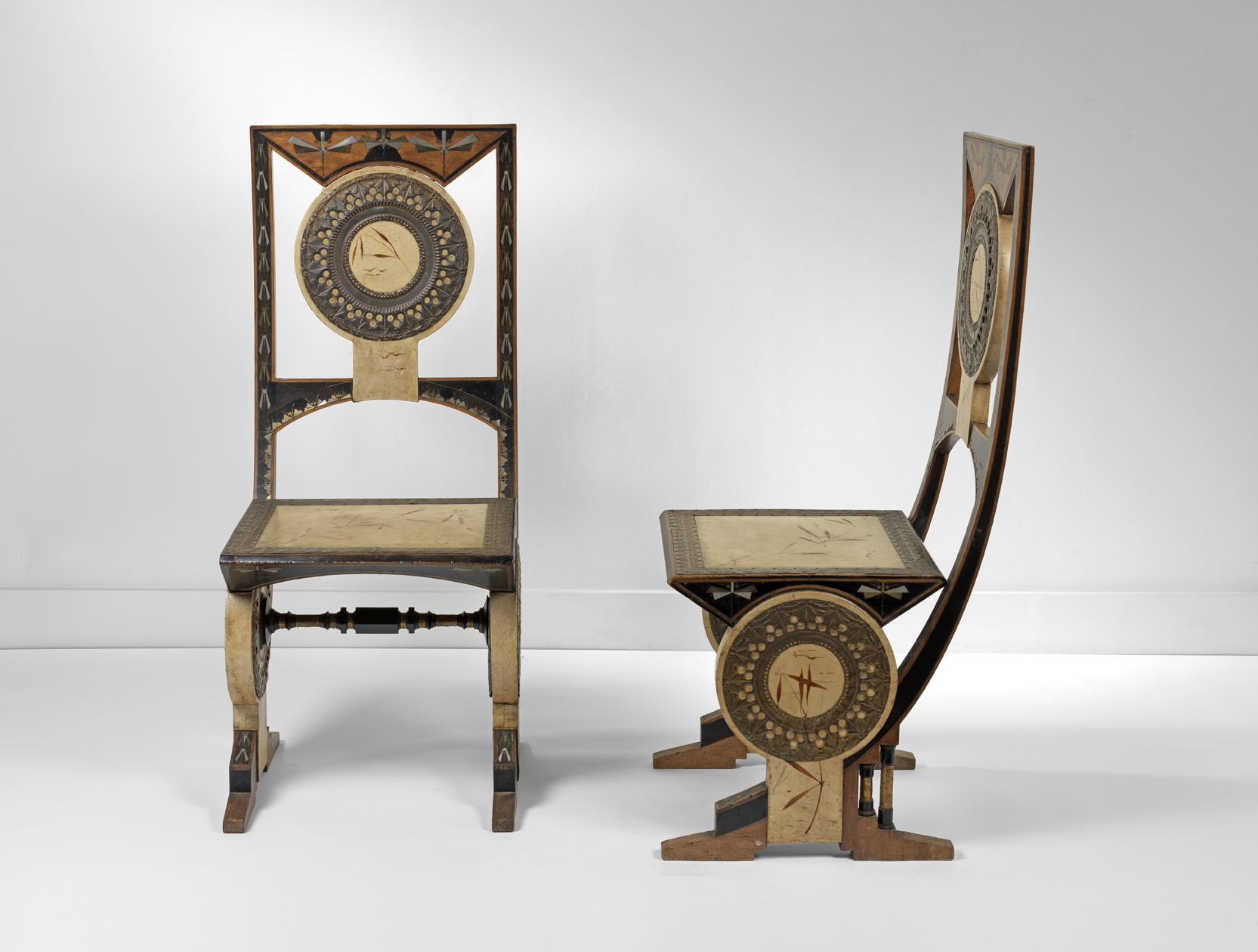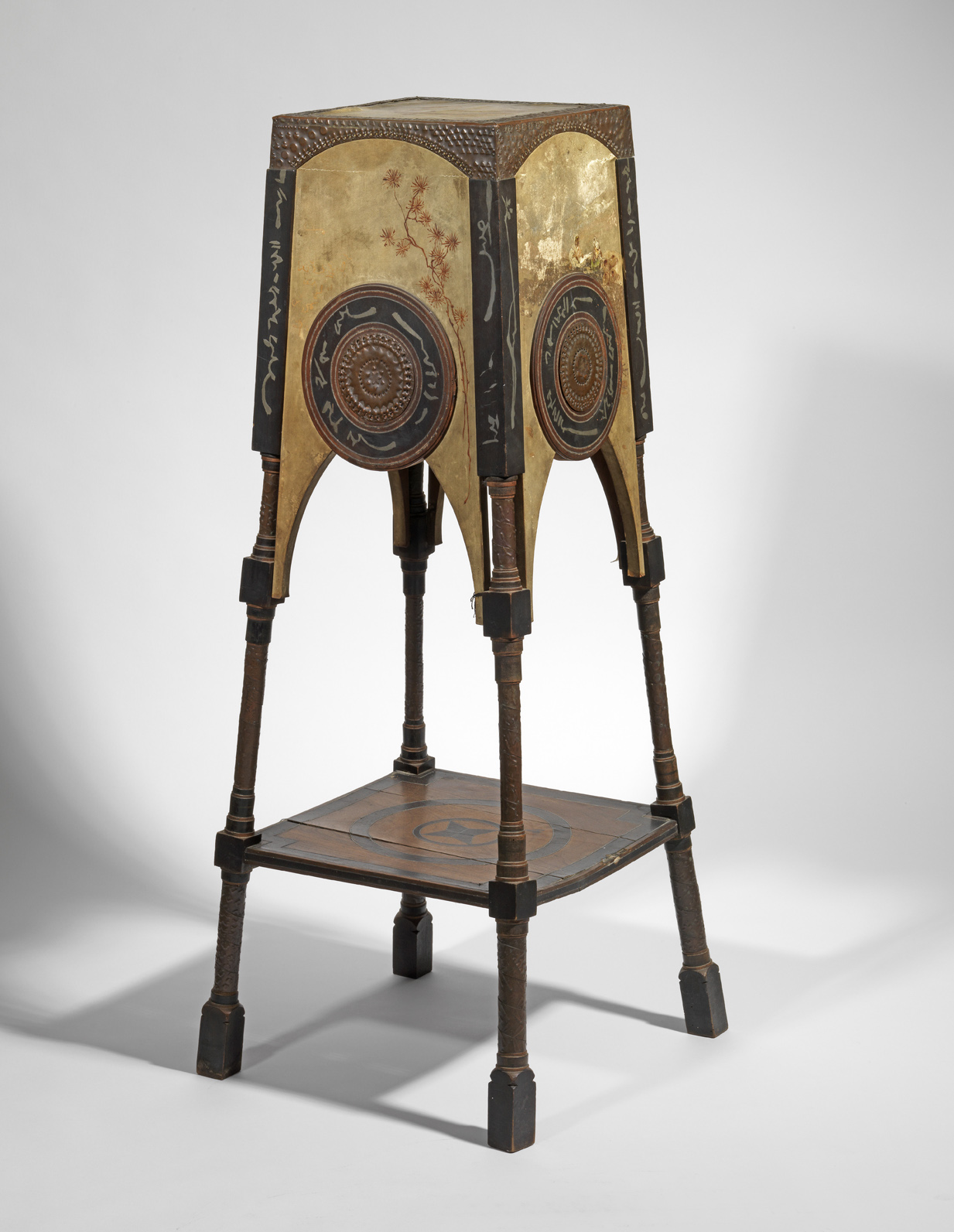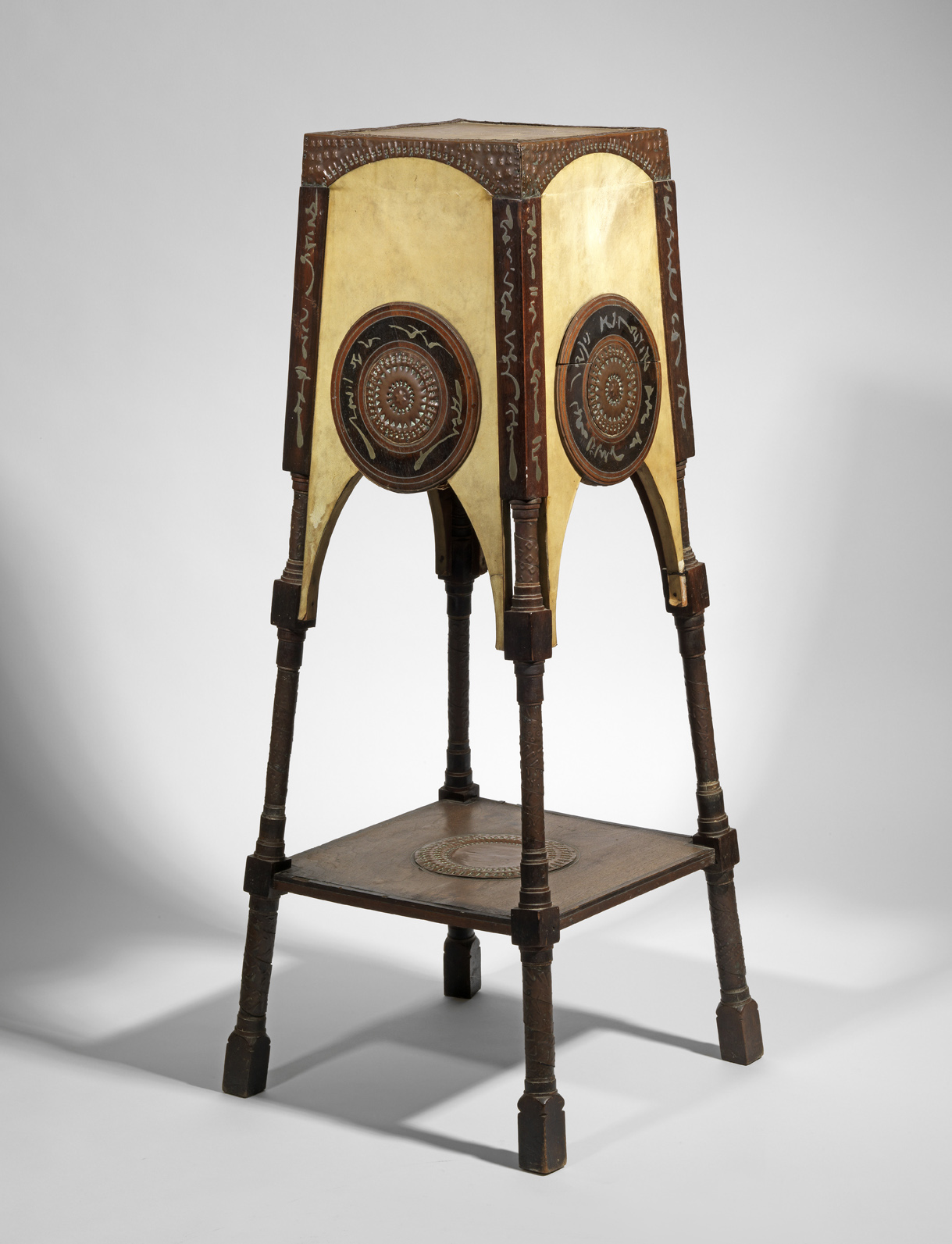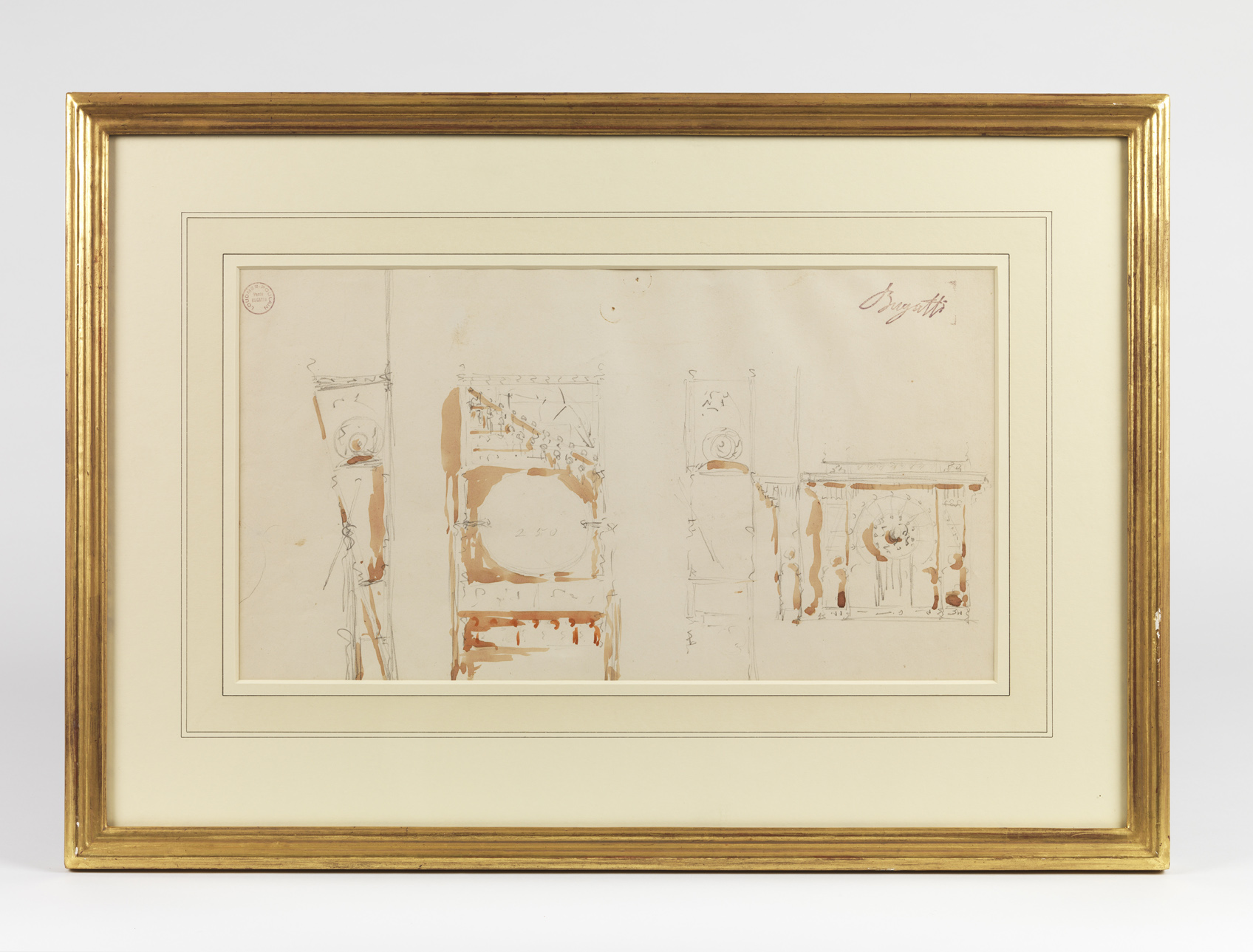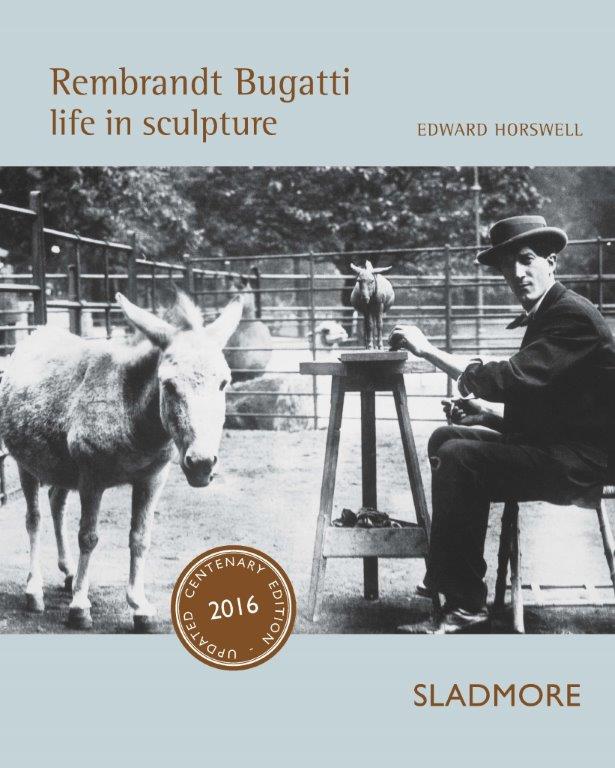
The purest perfect shape of nature is the egg. Carlo Bugatti
The 1890’s was the heyday of Bugatti’s furniture production. During this decade he won great acclaim and innumerable awards at the world fairs of the period for his individual brand of furniture, objets d’art and interiors. The unique designs he created helped to usher in the Art Nouveau movement and later develop what would become known as Art Deco. Carlo’s many cultural associates included painters such as the Alpine impressionist Giovanni Segantini; musicians such as Giacomo Puccini and his librettist Luigi Illica; sculptors such as Ercole Rosa, Guiseppe Grandi and Paul Troubetzkoy; and writers such as Leo Tolstoy.
Carlo’s exotic ornamentation, coupled with his sometimes opulent, sometimes austere elegance of form, place him on a par with Mackintosh, Tiffany, Dresser and Lloyd-Wright amongst others, who were his co-exhibitors at the great world fairs of the early twentieth century. It is Bugatti’s furniture, in wood; leather, vellum and metals for which he is perhaps best known.
Carlo Bugatti had studied at the Brera Academy in Milan, and the École des Beaux-Arts in Paris. He was to become a member of the Société des Beaux-Arts and a juror of the Salon d’Automne in Paris. As a designer, however, he had won even greater acclaim and innumerable awards at the World Fairs of the period for his individual brand of furniture, objets d’art and interiors. The unique designs he created helped to usher in the Art Nouveau movement and later develop what would become known as Art Deco. Carlo’s many cultural associates included painters such as the Alpine impressionist Giovanni Segantini; musicians such as Giacomo Puccini and his librettist Luigi Illica; sculptors such as Ercole Rosa (Rembrandt’s godfather), Giuseppe Grandi and Paul Troubetzkoy; and writers of the stature of Leo Tolstoy. Thus the milieu in which the young Rembrandt Bugatti grew up was highly cultured. The family had a tradition of intense creativity verging on the quixotic. His grandfather (Carlo’s father) had also been a designer, architect and inventor, spending much of his ample resources in the vain pursuit of perpetual motion. Previous generations had been artists, too, and the family could claim descent from the fifteenth-century Milanese painter Zanetto Bugatti and the seventeenth-century engraver Giovanni Francesco Bugatti. Carlo’s own precocity as a youth had earned him the nickname ‘the young Leonardo’. He had the qualities of a ‘Renaissance man’; he was prodigiously gifted as a painter, designer craftsman, creator of silverware and furniture. His flamboyance in dress (he designed his own clothes) and personal deportment and his tendency to alternate between intense reclusiveness and grand socializing were traits that his sculptor son would come to share.
In his work and creative philosophy, Carlo was very much a part of the progressive trends in European art of the late nineteenth century that spawned the Arts and Crafts movement. The pursuit of the decorative – art for art’s sake – and the abandoning of grandiose subjects for aesthetic pleasure were all part of Carlo’s conception. These were traits that Rembrandt subsequently reflected in his own work, but also sought to develop and surpass. Milan was a centre where not only the fine and applied arts, but also science and technology, were closely associated. Carlo’s rich visual cocktail of Moorish and Byzantine influences, and his faith in traditional hand skills, combined with a radical daring in terms of the structure of his functional creations, make him the peer of international figures such as Charles Rennie Mackintosh, Louis Comfort Tiffany and Christopher Dresser. Accolades and medals at World Fairs, notably in London in 1888, Paris in 1900 and Turin in 1902, marked his hugely successful career, and he was in a position to assist his sons materially and to provide them with influential connections as they made their ways as sculptor and automotive designer respectively. Carlo’s creations in many ways combine the characteristics – aplomb, stylization, functional inventiveness – that typify both his sons’ work.
Artworks
View all Artworks >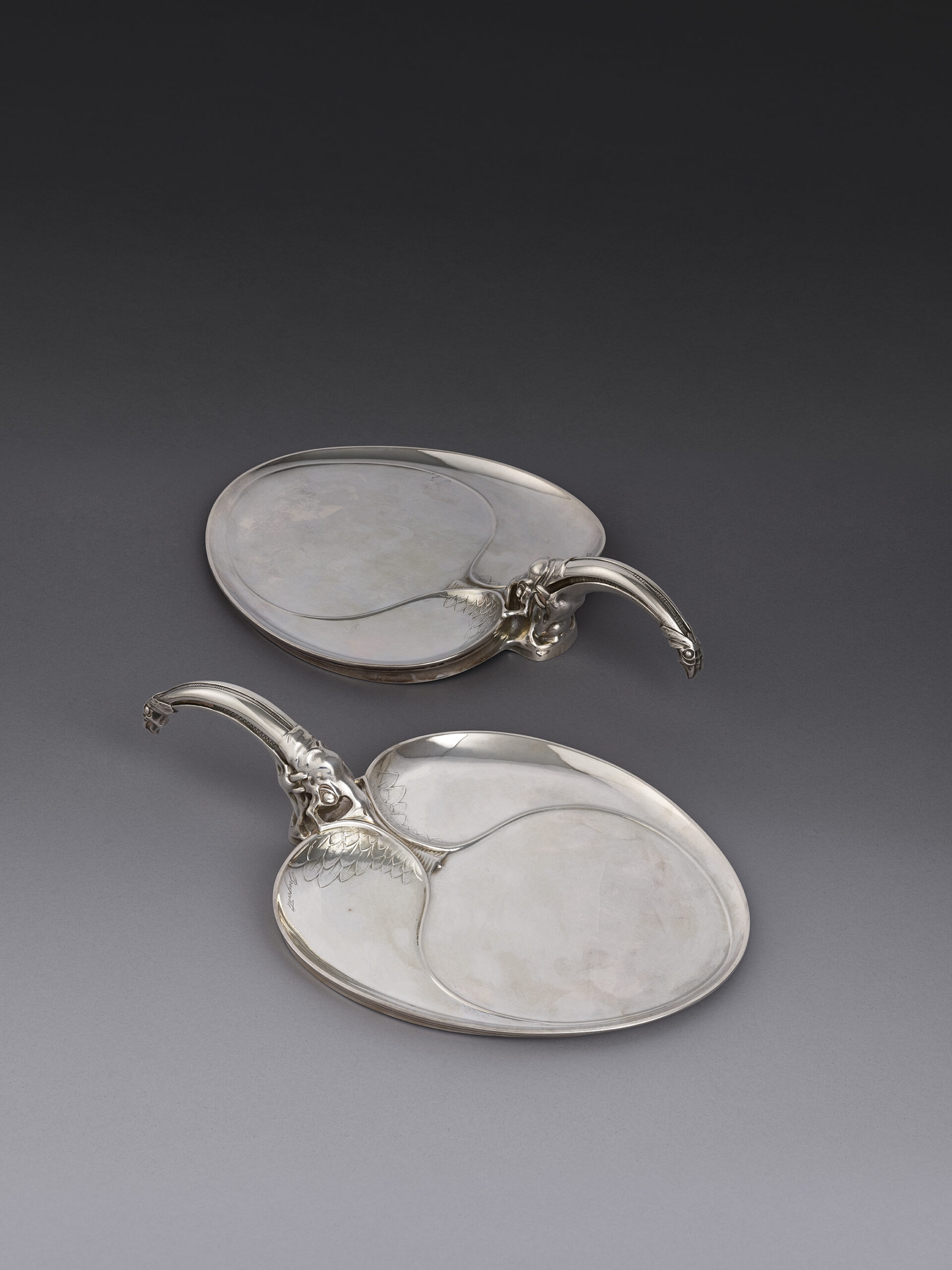
A silver Lily Pad Canape dish with Stylised Bestial handles, c. 1908
Carlo Bugatti
A fine quality, rare, early twentieth century solid silver ‘Lily Pad Canapé dish with Stylised Bestial handles’ by Carlo Bugatti (Italian, 1856-1940). It was cast […]
Publications
View all Publications >